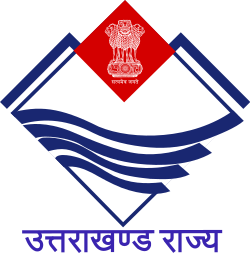| № | Name | Constituency | Departments | Party |
|---|
| Chief Minister |
| 1 | Pushkar Singh Dhami | Champawat | - Confidential (Council of Ministers)
- Establishment of Personnel and All India Services
- Alertness, Swaraj, Corruption Elimination and Public Service
- Secretariat Administration
- General Administration
- Planning
- State Property
- Information
- Homes, Prisons, Citizen Protection and Home Guard, Military Welfare
- Revenue
- Industrial Development (Mining)
- Industrial Development
- Labor
- Information Technology
- Science Technology
- Parliamentary Affairs
- Census
- Reorganisation
| - Drinking Water
- Energy and Alternative Energy
- Ayush and Ayush Education
- Excise
- Justice
- Environment Conservation and Climate Change
- Disaster Management and Rehabilitation
- Civil Aviation
- Social Welfare
- Minority Welfare
- Student Welfare
- Transport
- Small and Micro Medium Enterprises
- Khadi and Village Industries
- Finance Commercial, Stamp and Registration
- Urban Development
- Housing
| BJP | |
|---|
| Cabinet Ministers |
| 2 | Satpal Maharaj | Chaubattakhal | - Public Works Department
- Panchayati Raj
- Rural Construction
- Tourism
- Minor Irrigation
| - Culture
- Watershed Management
- India-Nepal River Projects
- Irrigation
- Charity
| BJP | |
|---|
| 3 | Ganesh Joshi | Mussoorie | | - Agricultural Marketing
- Agricultural Processing
- Agricultural Education
- Plantation and Horticulture
- Silk Development
- Bio Technology
- Sainik Welfare
- Rural Development
| BJP | |
|---|
| 4 | Dhan Singh Rawat | Srinagar | | - Primary Education
- Secondary Education
- Sanskrit Education
- Cooperative
- Higher Education
- Medical Health
- Medical Education
| BJP | |
|---|
| 5 | Subodh Uniyal | Narendranagar | - Forest
- Elections
- Technical Education
- Language
| BJP | |
|---|
| 6 | Rekha Arya | Someshwar | - Women and Child Development
- Food and Civil Supplies
- Consumer Affairs
| | BJP | |
|---|
| 7 | Saurabh Bahuguna | Sitarganj | - Animal Husbandry
- Milk Development
- Fisheries
| - Sugarcane Development
- Sugar industry
- Protocol
- Employment
| BJP | |
|---|
